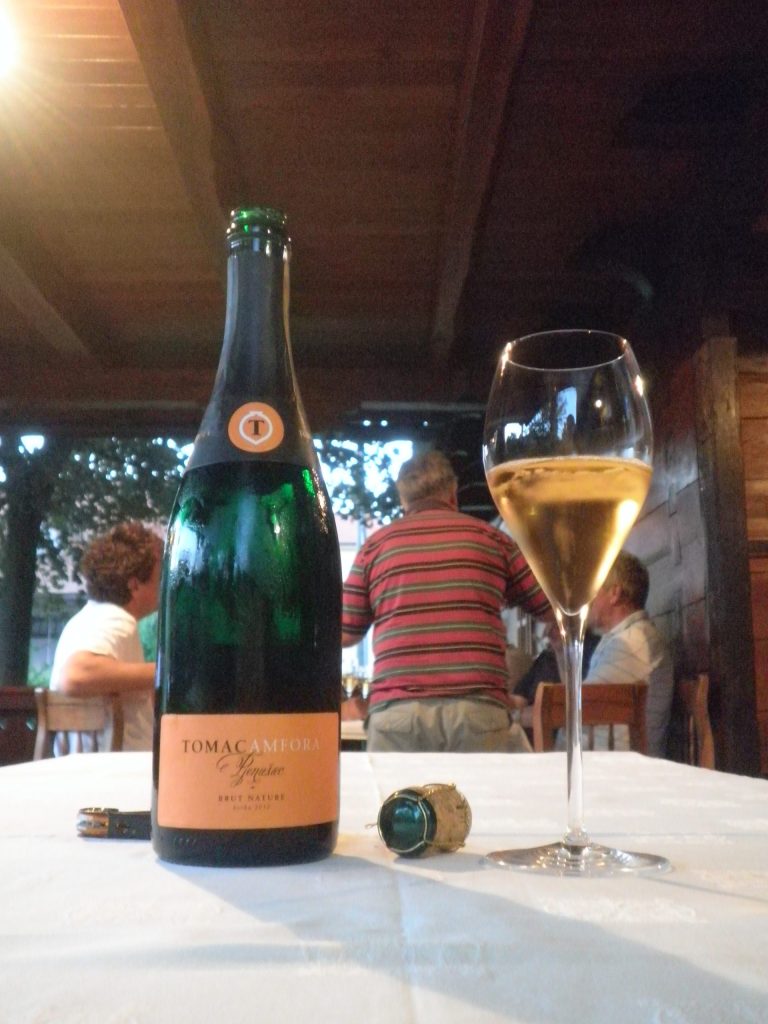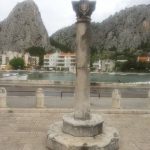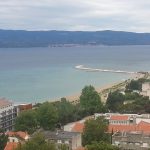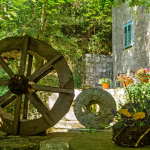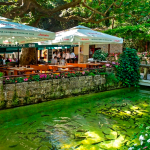I frowned a bit, thought a lot, enjoyed plenty, but was silent when I first tasted it. The second time I barely stopped a flood of praise, but after the third taste, I couldn’t hold back. I cannot now either: the amphorae sparkling wine by the Plešivica family Tomac has surpassed its still wines aged in a clay container underground, but also all their previous sparklings, which are the best in Croatia.
The Tomac family were the first in the world to make a sparkling from amphorae wine. It is a mix of Chardonnay (50 percent) and ten white sorts which were usually planted together on Plešivica before the Second World War, among them Graševina, Green Silvanac, Yellow Plavec, Red and Green Veltliner, Neuburger… The vineyard is a family heirloom and is nearly 80 years old.
The must with grape skins from the 2010 harvest was buried in amphorae in the ground for six months. Then it was pressed and aged for a year and a half in a wooden barrel of 3.000 litres. It was poured into champagne bottles where the second fermentation was initiated, with new corks from 2013. It’s been on the market since the end of 2013.
The first to be noticed in the glass is the strong colour, orange, giving away the production technology through long maceration. Then the bubbles go crazy, tiny, but in millions and hardly tameable. Under the nose begins a calming, the scent is typical for biodynamic wines produced without chemical protection, with procedures in accordance with the Moon harvest calendar, or the position of heavenly bodies. In the mouth the amphorae sparkling offers freshness and playfulness demanded from sparkling wines. It is long living, typical of wines that take a long time to create, also changing constantly in the bottle so every taste offers a new experience. And now, at the end of 2016, it shows a fine ripeness, without any hint of old age.
“It’s not always the youth who are revolutionary. Father suggested we champagne the wine from 2010 and I was against. I was afraid the tannins from the amphorae will not go well with the carbon dioxide,” truthfully commented Tomislav Tomac. No room for fear. It is a great, special wine that went well even with beef stew.
The Tomac family took Amfora sparkling to Champagne, to the famous Jacques Selosse winery in Avize. It was liked by Anselme Selosse who buried an amphora in the cellar and macerated and fermented must and grapes from the 2015 harvest.
And the Agricultural Cooperative Vrbnik from Krk island was the first to place sparkling wine to age at the bottom of the sea.
“I wanted to make aged sparklings, with no such conditions in the old cellar. The temperature changed too much, there was noise, the light went on and off… Too much restlessness for a multi-year second fermentation in the bottle. Aren’t the conditions at the bottom of the sea perfect, I wondered. Dark, peace, quiet. At 32 metres depth the temperature is 12 Celsius, with barely noticeable oscillations. And in 2006 we lowered the first bottles,” recalls the experiment from 10 years ago Marinko Vladić, manager and enologist of the Agricultural Cooperative Vrbnik.
“Some of the bottles were recovered after a year and the sparkling was good. Since then every year part of the Valomet white sparkling is placed on the bottom, made from the indigenous Krk sort Žlahtina Blanc. Every year around 200 bottles are recovered and it has become a first rate attraction. 30 bottles were used to celebrate the purchase of 13.000 square metres for a new cellar in the beginning of summer 2016.
“Around 200 of us gathered and we drank it all on the boat, before returning to Vrbnik,” laughs Vladić, Ilok-born who married on Krk, playing with Žlahtina in the sea instead of Traminer, Green Silvanac or Graševina on the Danube.
The second fermentation in the sea created a problem of the metal cork which begins to give way in the sixth-seventh year. The first bottles on the bottom were therefore recapped.
“It’s not a satisfactory solution so we will limit the aging of Sea Valomet to five years. We are looking for another solution for the caps, maybe plastic. If they turn out well, we will age it seven to eight years, as the best champagnes are,” Vladić concluded.
After Vrbnik folk, sparklings aged at the bottom of the sea was done by some Italian wine makers, while Istrian wine maker and caterer Rino Prelac from Momjan placed his still wine in the “sea cellar.”

